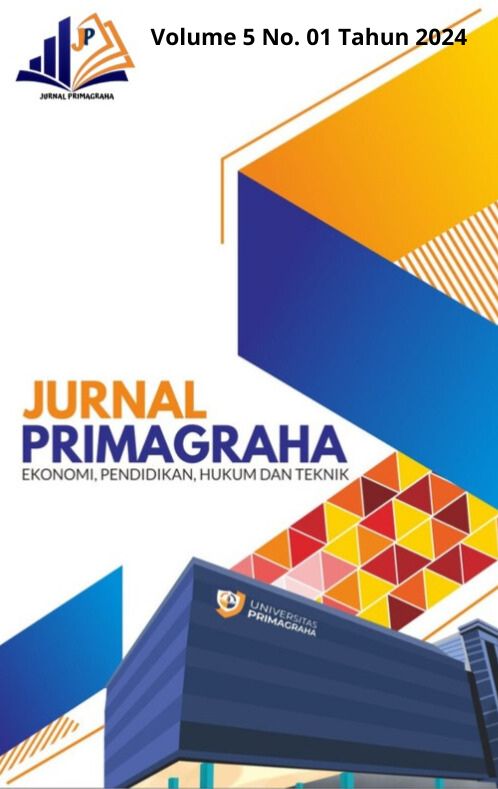The Role of the Teacher as a Motivator in Strengthening the Character of Learning Discipline in Fourth Grade Students at SD Islam Birrul Waalidain
DOI:
https://doi.org/10.59605/6p0pyh33Keywords:
Teacher's Role as Motivator , Character of Learning DisciplineAbstract
This research is based on the importance of the teacher's role as a motivator in implementing the character of learning discipline. This research aims to determine the role of the teacher as a motivator in strengthening the character of learning discipline, especially the process of the teacher's role as a motivator in strengthening the character of learning discipline, the factors that influence learning discipline, and the impact of learning discipline on fourth grade students at Birrul Waalidain Islamic Elementary School. This research is a qualitative descriptive type of research and the subjects of this research are class IV teachers and students. Data was collected through observation, interviews, documentation and descriptive analysis. The research results found that the role of the teacher as a motivator in strengthening the character of learning discipline in fourth grade students at Birrul Waalidain Islamic Elementary School was good. It can be seen that the role of the teacher as a motivator in strengthening the character of learning discipline in fourth grade students at Birrul Waalidain Islamic Elementary School is by making efforts such as explaining learning objectives to students, giving prizes, holding rivalries/competitions, giving punishments, arousing students' encouragement, using varied methods. , and use good media. Apart from that, the factors that influence learning discipline in strengthening the character of learning discipline carried out by resource persons at schools show that there are several factors that influence learning discipline, one of which is internal factors (coming from the students themselves). Internal factors are divided into 2, namely physical condition and psychological conditions and external factors (coming from the external environment). External factors include family habits, school rules and community conditions. The impact of learning discipline on fourth grade students at Birrul Waalidain Islamic Elementary School is quite good. This can be seen from the daily habits of students who are able to comply with school rules, comply with learning activities at school, carry out tasks that are their responsibility, and study discipline at home.
References
Kompri. (2016). Motivasi Pembelajaran Perspektif Guru dan Siswa. Bandung: Remaja Rosdakarya
Moleong, Lexy J. (2010). Metode Penelitian Kualitatif (edisi revisi). Bandung: Remaja Rosdakarya
Munir, Aska, Elpisah, Husain AS dan Rakib, M. (2018). Jurnal Ilmiah Pena. Implementasi Program Pendidikan Karakter Di SMP Negeri 2 Lilirilau Kabupaten Soppeng. Vol 1 (2)
Rachmawati, Tuti. (2015). Teori Belajar dan Proses Pembelajaran Yang Mendidik. Yogyakarta: Gava Media
Sabartiningsih, Mila. Jajang, Aisyul. Muzakki, Durtan. (2018). Implementasi Pemberian Reward dan Pushment dalam Membentuk Karakter Disiplin Anak. Jurnal Pendidikan Anak Vol. 4 No. 1
Sanjaya, Wina. (1998). Kurikulum dan Pembelajaran. Jakarta: Media Group
Sanjaya, Wina. (2013). Strategi Pembelajaran Berorientasi Standar Proses Pendidikan. Jakarta: Kencana
Slameto. (2010). Belajar dan Faktor-faktor Yang Mempengaruhi. Jakarta: Rineka Cipta
Sugiyono. (2011). Metode Penelitian Kuantitatif Kualitatif dan R & D. Bandung: Remaja Rosdakarya
Taufik, M. (2013). Pengantar Pendidikan. Bandung: CV.Mujahid Press
Tu'u, Tulus. (2008). Peran Disiplin pada Perilaku dan Prestasi Siswa. Jakarta: Grasindo
Downloads
Published
Issue
Section
License
Copyright (c) 2024 Siti Nailah, Zerri Rahman Hakim, Ratna Sari Dewi

This work is licensed under a Creative Commons Attribution-ShareAlike 4.0 International License.










